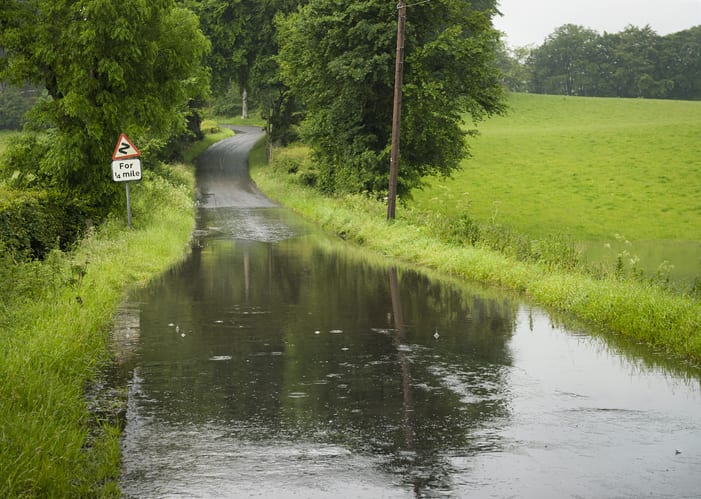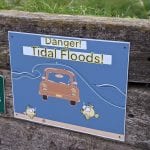
No-one can have failed to notice how our weather has become more extreme over the past few years. With flooding more prevalent, images of houses becoming islands and stranded vehicles in serious difficulties are becoming common on the news. There are many theories into the causes of record breaking rainfall and the worsening effect it is having, but everyone is in agreement that the situation is getting worse.
When it comes to flooded roads, even seasoned drivers can get into trouble – as it’s very easy to underestimate the depth and flow of flood water. A few months ago my friend’s daughter was alone in her car and she attempted to drive down a flooded lane, the water was deeper than she anticipated and the car floated off – thankfully she was rescued. But it reminds us that there are real dangers involved and we really must stay vigilant.
There are a few steps you can take to help avoid getting into trouble and how to manage your risk if you have to travel.
Firstly, it sounds very simple, but if flooding is forecast in your area it is worth considering whether your journey is really necessary. If you can, it might just be wiser to stay put.
If you do have to drive through a flooded section of road, only drive through water you could easily walk through and never drive down a stretch where you cannot see the end of the flooded section. Flood water can easily conceal dips in the road, blow off manhole covers and even wash away the road surface.
As far as possible drive in the middle of the road where the water is likely to be shallowest, and be considerate to other motorists and if there are any, pedestrians. Only drive through flooded sections of road one vehicle at a time. Also observe how others are coping as this will help your decision making.
Never drive through fast flowing water for example at a ford or flooded bridge approach. As little as a foot of water can start to make a car buoyant and as little as six inches of water can get you into trouble in most passenger vehicles.
If water gets into the exhaust or especially the engine air intake, you will be stranded and your car badly and expensively damaged.
Never try to drive at speed through water. Although this is tempting, you are more likely to loose control and the water resistance can make you feel as if you have driven into a wall. Also if water splashes around the engine you may end up damaging the electrics. Instead drive slowly in either first or second gear, slipping the clutch will help, as will revving the engine (use the L mode if you are driving an automatic). This will help keep the exhaust pipe clear and keep the engine running. If you are creating a bow wave, keep very steady as you may be affecting other vehicles.
All these tips apply even if you are in a 4 X 4. Unless you have a properly prepared vehicle with a high air intake and protected electrics, you are just as likely to get into trouble as an ordinary car.
 If you are parking near the sea make sure that you pay attention to tidal information to make sure you car won’t be submerged when you return.
If you are parking near the sea make sure that you pay attention to tidal information to make sure you car won’t be submerged when you return.
Lastly, if you do get into real trouble and your car starts to float, open the door immediately. If you have a passenger get them to do it so you can try to keep control of the engine.
We hope you find this information useful.
Be safe in your travels.


